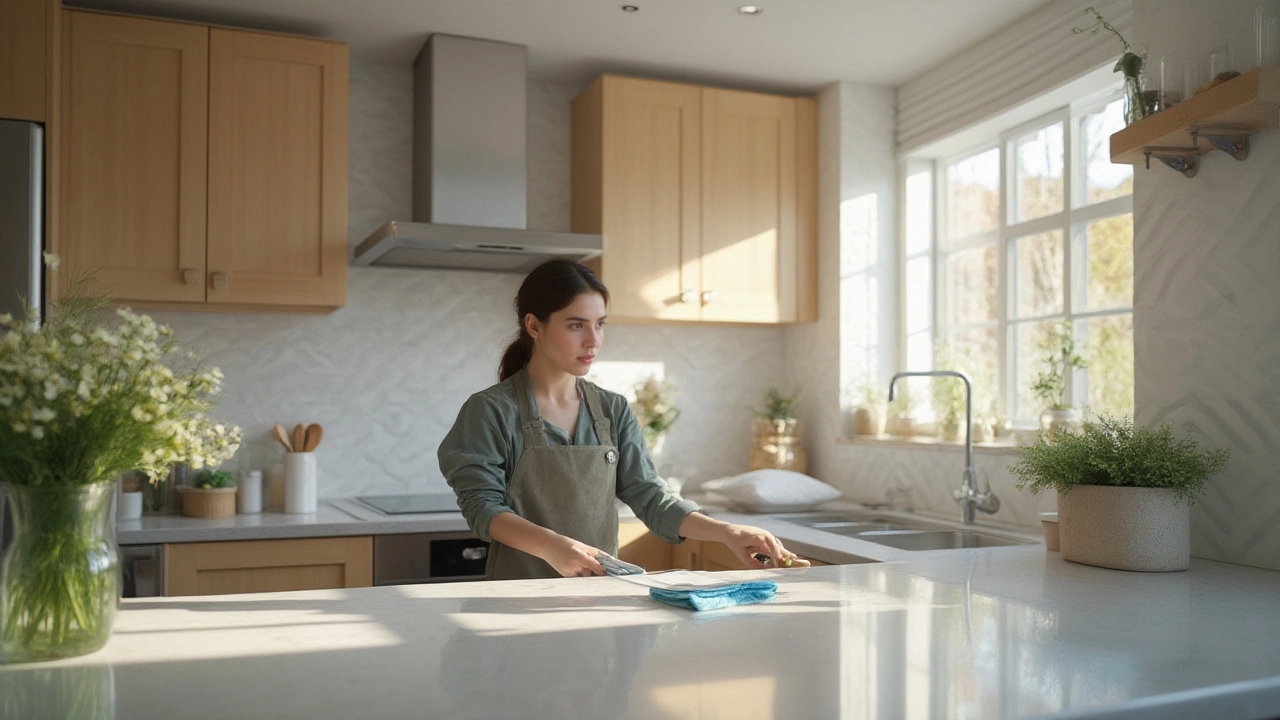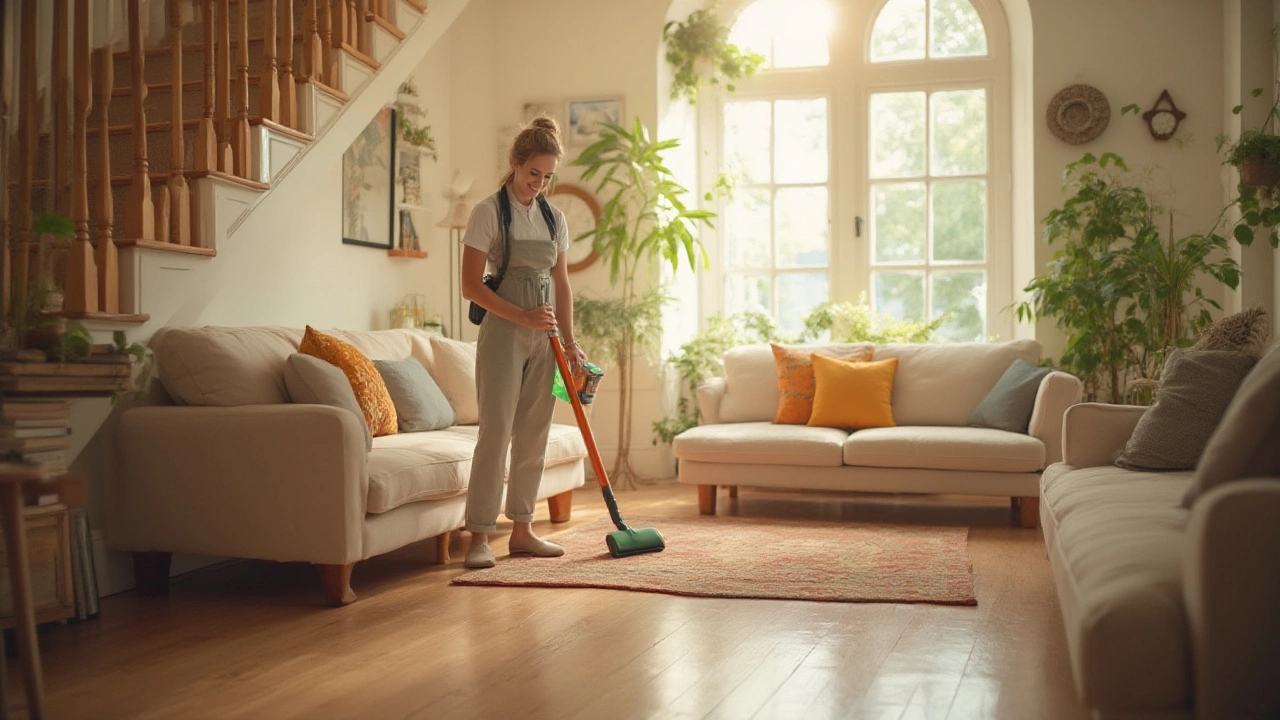Ever opened your door after the cleaners finished and wondered if you were short-changed… or maybe just uncertain about what you actually paid for? You aren’t alone. People look at freshly made beds and streak-free mirrors and think— nice, but what else did they do? Standard clean is a term that gets thrown around by cleaning companies all the time, but what’s in it for you? Is it just surface dusting and vacuuming, or does it go deeper?
The Real Deal: What “Standard Clean” Actually Covers
So, let’s pull back the curtain on a standard clean. Cleaning services use the term “standard clean” (or sometimes, “regular clean”) to describe their baseline offering—and it’s a baseline for a reason. It tackles all the stuff that piles up in daily life. We’re talking dust on window sills, crumbs on kitchen counters, toothpaste crust on bathroom sinks, and that mysterious gunk around the stove knobs. I once asked a pro cleaner what people most often overlook. Their answer: under the living room couch. Turns out, most standard cleans get under there at least once every visit.
What doesn’t get done? Well, don’t expect your carpets washed, your blinds deep-soaked, or your oven degreased in a regular clean. That’s heavy-duty, “deep cleaning” territory. Standard means you’ll have a space that looks, smells, and feels fresh when you walk in—but it’s not a full reset button for a year’s worth of dirt. How often should it happen? Industry research shows twice a month is the sweet spot for most homes to stay comfortable without feeling like you’re living in chaos. A weekly schedule? That’s more common for families with pets and kids (ask me about Isla and the time our dog trailed peanut butter paw prints up the stairs).
Want numbers? According to a 2023 survey by the International Sanitary Supply Association, 84% of cleaning companies include dusting, mopping, kitchen wipe-downs, and bathroom cleaning in their standard package, but less than 40% offer inside-fridge cleaning. Here’s a quick look at average industry inclusions:
| Task | Standard Clean | Deep Clean |
|---|---|---|
| Dust Surfaces | ✔ | ✔ |
| Vacuum & Mop Floors | ✔ | ✔ |
| Clean Toilets & Sinks | ✔ | ✔ |
| Clean Baseboards | ✘ | ✔ |
| Inside Oven/Fridge | ✘ | ✔ |
The idea is, if you hosted a friend after a standard clean, you wouldn’t feel the urge to apologize for the dust, a sticky bathroom floor, or the sink full of last week’s dishes. Your home would look ready for visitors or, at the very least, like you have your life together.

Room-By-Room: Breaking Down the Standard Clean
The real magic happens in the details. Every cleaning company has their checklist, but most share the same setup. Wondering how thorough a standard clean actually is? Let’s take a tour.
Standard clean starts at the top—literally. Dusting is always first, usually with microfiber cloths and extending poles (because who wants a clump of cobwebs falling on their face?). Professionals start with ceiling fans, light fixtures, window ledges, and blinds (but only a quick dust, not a full wipe). They move down, tackling picture frames, doors, and ledges. Why this order? Gravity. Knock dust down, then vacuum it up off the floors at the end.
Kitchens get their own routine. Surfaces come next: counters, appliance tops (yup, even under the toaster), and sinks scrubbed until they shine. Grease spots on the stove and splashes on the microwave get wiped away, but most cleaners won’t open up your oven or fridge unless you pay extra. The kitchen table gets a once-over, but crumbs in drawers or behind the fridge? That’s deep clean territory.
Bathrooms usually get the most attention. Sinks and countertops are wiped, faucets shined, mirrors sprayed and wiped (no more toothpaste flecks), and toilets get a full scrub. Shower walls, tubs, and taps are wiped as well, though hard water stains or deep grout cleaning need an add-on service. Towels might be folded for that hotel look, and toilet paper edges? A pro might even fold ‘em for you if you’re fancy.
Common areas and bedrooms follow a pattern: Sheets may be straightened out (some companies will make the bed if you leave fresh linens out), and floors are vacuumed or mopped, rugs included. Tabletops, electronics, and furniture surfaces are dusted. Anything obviously out of place—remote in the sofa, toys on the floor—gets put back. Don’t expect cleaners to put away your laundry or organize your closet—that’s on you. If you want Marie Kondo magic, book a professional organizer.
The little things add up. Trash bins are usually emptied throughout the house, using your liners. Door handles, light switches, and stair rails get a rapid wipe—especially after the pandemic, when everyone suddenly remembered that germs live on everything.
Now, do you always get everything on this list? Nope. Some companies cap the hours, and if you live in a three-story house, they might focus on the main living areas and what they can get done in the allotted time. Pro tip: Before a first standard clean, do a “tidy round” to clear floors and counters, so cleaners can spend time scrubbing instead of moving your stuff.

What’s Not Included—and Should You Upgrade?
You probably wondered if you can just get a “standard” every time and never need a deep clean again. Truth is, even regular maintenance can’t get around life’s bigger messes. Things like scuffed baseboards, dust caked onto vent covers, mineral buildup in the showerhead, or fingerprints covering wall switches need attention now and then, but not every visit. That’s why you’ll see the upsell for “deep cleaning” or “move-in/move-out” cleans. These go underneath, behind, and inside—the spots that stay hidden week-to-week.
Here’s the stuff that almost never gets hit during a standard clean:
- Washing walls and doors (except for a quick wipe of obvious marks)
- Couch cushions flipped and vacuumed underneath
- Oven and fridge cleaned inside
- Cabinet interiors wiped out
- Garage or patio sweeping
- Blind washing or curtain laundering
- Limescale removal from faucets/showerheads
- Chandelier or high fixture detailing
Depending on where you live, the standard clean might look a little different. In big cities, the focus can be on speed—get in, get out, and hit every room. In small towns, you might find cleaners willing to stay longer and tackle “almost deep clean” tasks. I’ve lived in both, and honestly, the best results come from a clear conversation with your cleaning pro. If you have a special request, ask in advance—most are happy to add it (for a fee) or show you how to maintain it yourself between visits.
Want to get your money’s worth? My top three tips: Tidy up clothes and clutter before the cleaners arrive (saves time on their end), make a note of any especially dirty spots you want them to hit (the sticky kitchen drawer or that one stubborn bath stain), and do a walk-through after the first few cleans so you know what to expect. Most standard cleans are packaged with flexibility—the more clear you are, the better the results.
And here’s the kicker—people often overestimate how much time a pro cleaner will spend on the hard stuff. According to HomeAdvisor’s 2024 data, the average single-family standard clean takes about 2.5 hours for two cleaners, which shakes out to about 75 minutes per person. That includes bathrooms, kitchen, bedrooms, lounge—a speed you’d be hard-pressed to match on your own without breaking a sweat.
